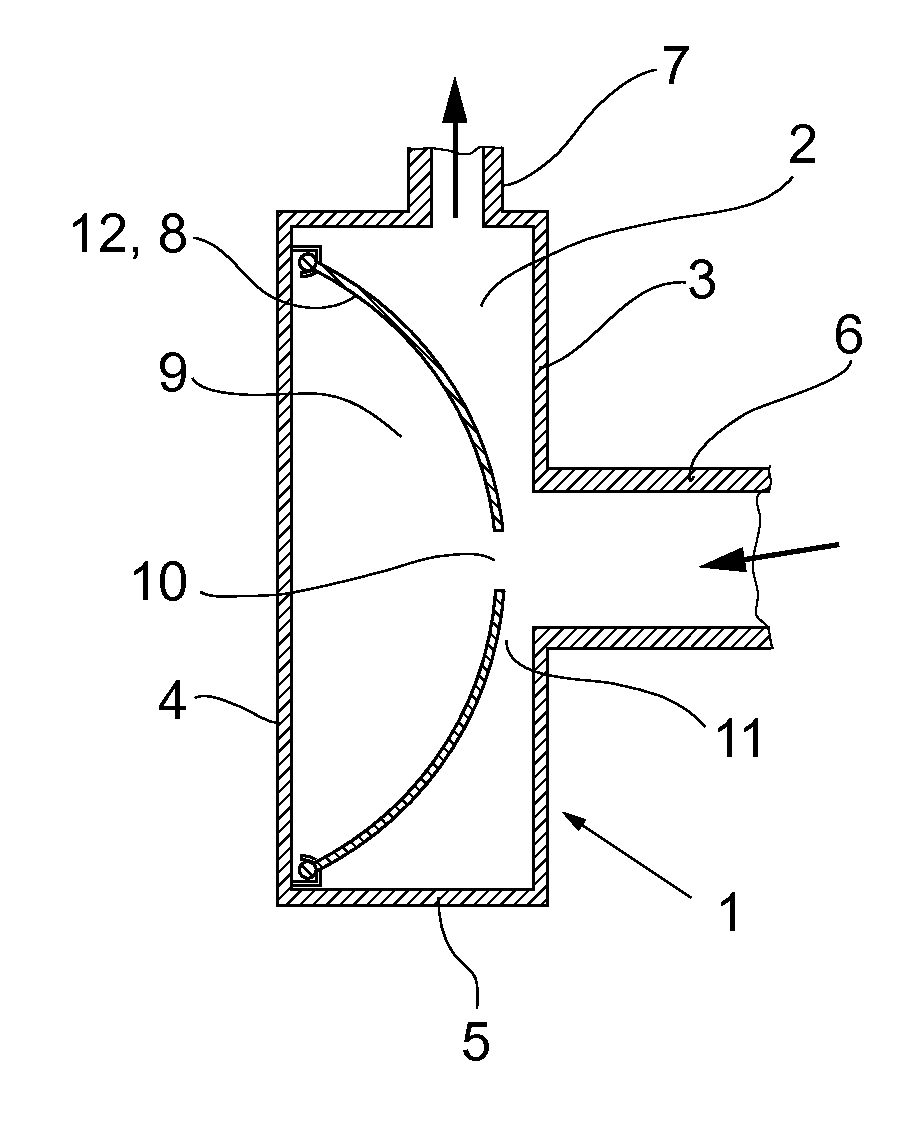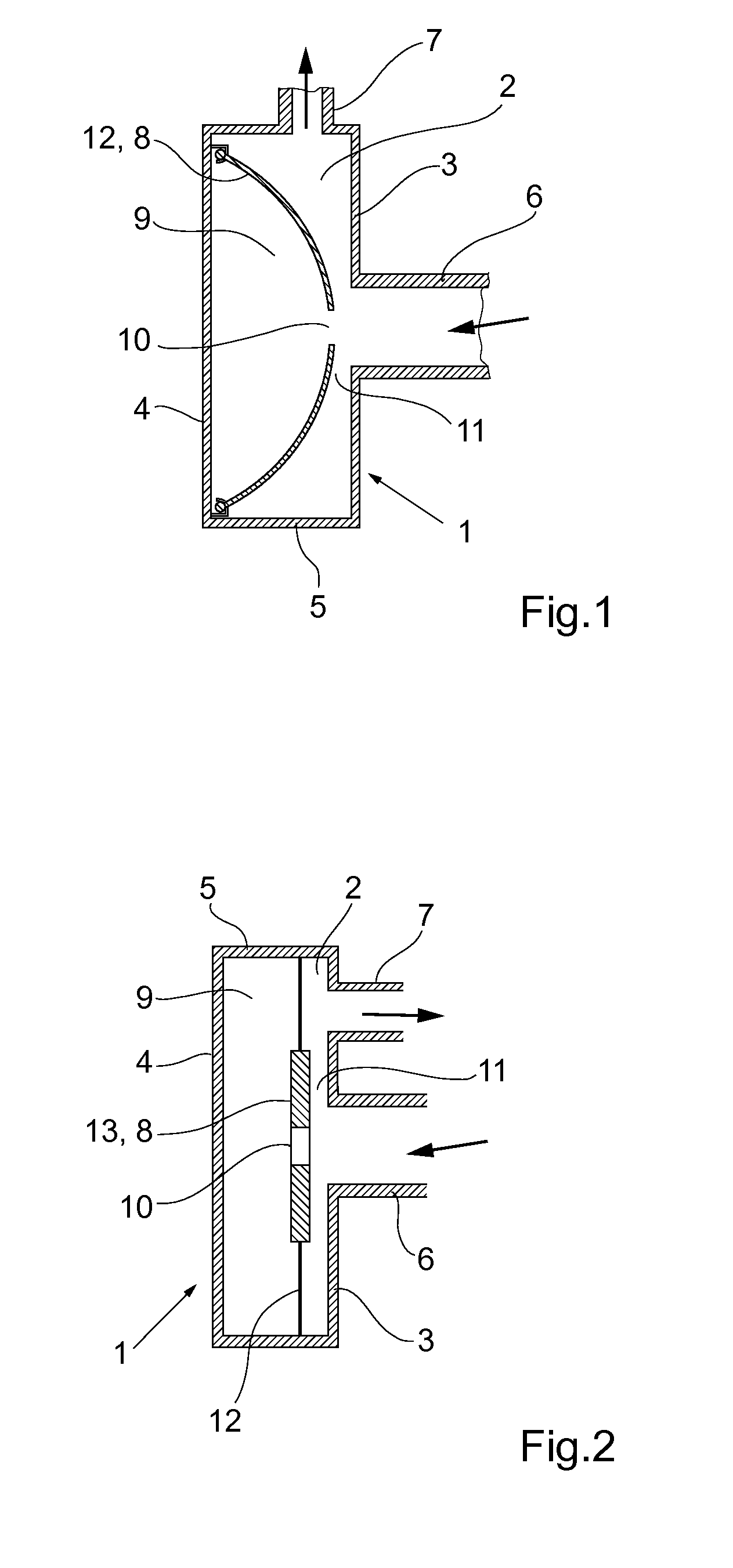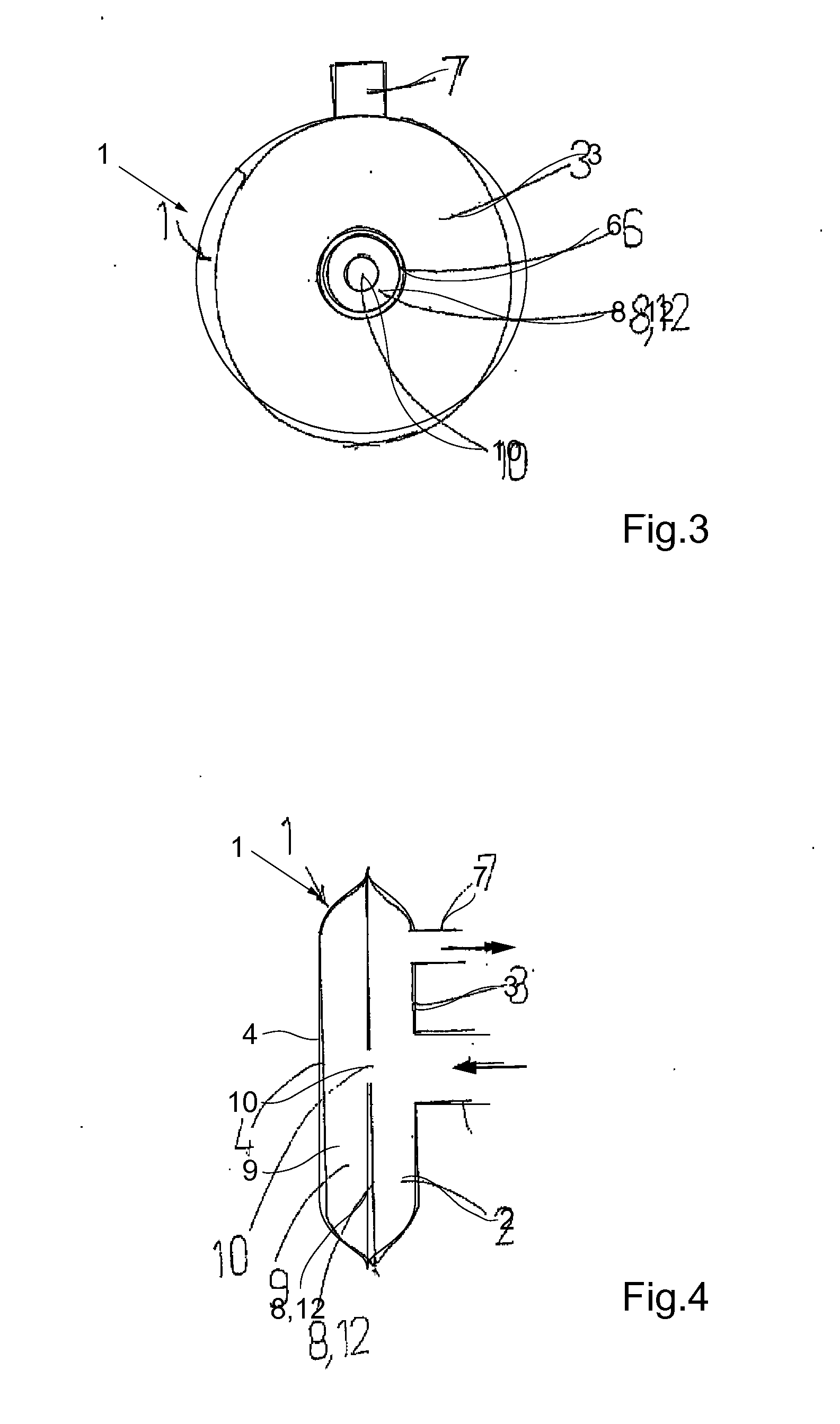Constant flow regulator device
a constant flow and regulator technology, applied in the direction of machines/engines, process and machine control, instruments, etc., can solve the problems of reliability and endurance, device production cost, and previously known fluid flow regulator devices having several different interacting parts, so as to reduce fluid pressure and increase the passage area
- Summary
- Abstract
- Description
- Claims
- Application Information
AI Technical Summary
Benefits of technology
Problems solved by technology
Method used
Image
Examples
first embodiment
[0027] shown in FIG. 1, an inner compartment 9 is formed by arranging a movable partition 8 inside the chamber 2, which together with the second wall 4 makes up the inner compartment. The partition 8 is made of a resilient material such as rubber or other polymer. The inner compartment, preferably at the movable partition 8, is provided with an aperture 10 preferably somewhere in a central part of the movable partition 8, for fluid communication between the inlet duct and the inner compartment. The inlet duct 6 is also arranged somewhere in the central part of the first wall 3, and thus roughly opposite the aperture 10 in the movable partition 8. However, the inlet duct 6 and the aperture 10 do not need to be aligned, as long as the aperture 10 is located in the vicinity of a high pressure area of the incoming fluid at the inlet duct 6. The inner compartment 9 may not need to have any volume when the pressure of the inlet medium is low, but may expand and thus display a volume when ...
fourth embodiment
[0037]In FIG. 5, the inventive constant flow regulator device is illustrated, which will be used for explaining the basic mechanism of the present invention in more detail below.
[0038]A housing 500 and a movable partition made as a resilient diaphragm 502 form an inner compartment 504 arranged in a fixed relationship with an inlet duct 506 for incoming fluid, the diaphragm 502 facing the inlet duct 506. The size of the diaphragm 502 is significantly greater than the size of the inlet duct 506, the latter constituting a high pressure zone when a fluid pressure is applied in the inlet duct 506 that is the sum of a static pressure and a dynamic pressure. The diaphragm 502 has an aperture 508 in the vicinity of the inlet duct 506, providing fluid communication between the incoming fluid and the inner compartment 504. Thereby, a relatively high static fluid pressure at “A” in the inlet duct 506 is basically also present at “B” inside the inner compartment 504 by means of the aperture 508...
sixth embodiment
[0045]FIG. 7 illustrates a front view of an inlet duct 700 of a constant flow regulator device which may be arranged on the end of the inlet duct 506, 602 of FIGS. 5 and 6, or just inside the inlet opening 6 shown in FIGS. 1-4. A plurality of protruding knobs or ribs 702 are arranged on the end surface around the inlet duct or opening facing the movable partition, in order to eliminate the risk of closing the fluid passage 11 or 510 completely if an excessive fluid pressure would move the movable partition into contact with the inlet duct or opening. Moreover, the protruding knobs or ribs 702 may optionally be used to further influence the characteristics of said elastic force, e.g. in combination with the selection of material and / or thickness of resilient part(s) of the movable partition.
[0046]In FIG. 8, a seventh embodiment of the inventive constant flow regulator device is illustrated which is different from the previous embodiments 1-6 by using a rigid movable partition 800 wh...
PUM
 Login to View More
Login to View More Abstract
Description
Claims
Application Information
 Login to View More
Login to View More - R&D
- Intellectual Property
- Life Sciences
- Materials
- Tech Scout
- Unparalleled Data Quality
- Higher Quality Content
- 60% Fewer Hallucinations
Browse by: Latest US Patents, China's latest patents, Technical Efficacy Thesaurus, Application Domain, Technology Topic, Popular Technical Reports.
© 2025 PatSnap. All rights reserved.Legal|Privacy policy|Modern Slavery Act Transparency Statement|Sitemap|About US| Contact US: help@patsnap.com



